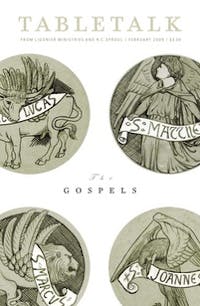
Request your free, three-month trial to Tabletalk magazine. You’ll receive the print issue monthly and gain immediate digital access to decades of archives. This trial is risk-free. No credit card required.
Try Tabletalk NowAlready receive Tabletalk magazine every month?
Verify your email address to gain unlimited access.
In the history of biblical studies, we have seen in the last two centuries the rise of so-called “higher criticism.” So much of higher criticism is fueled by skepticism with respect to the reliability of the biblical texts. Since orthodox Christians stand opposed to many of the arguments of higher critics, they sometimes overlook valuable insights that can be gained through critical analysis of the text. Some of these analyses can be very helpful to our endeavor of seeking an accurate understanding of the Bible.
One element of critical scholarship that can do this is that dimension known as source criticism. As the title suggests, this type of criticism attempts to reconstruct the way in which the Synoptic Gospels (Matthew, Mark, and Luke) came to be written.
The general assumption among source critics is that Mark was the first written gospel. This is seen by an analysis of Matthew and Luke—both Matthew and Luke have material in their gospels that is common to the gospel of Mark. At the same time, there is common material found in Luke and in Matthew that is not found in Mark. The scholars then try to account for this common information found in these two gospels that is absent from Mark’s gospel. The working hypothesis is that Matthew and Luke, in addition to having Mark as a source for their information, had a second independent source that Mark did not use. This second independent source is called simply the “Q-source.”
That letter Q is used since it is the first letter of the German word quelle, which is simply the word for source. That is to say, the Q-source is a source that is unknown to us but known to the gospel writers Matthew and Luke. Much of this analysis is speculative and hypothetical. Scholars differ as to whether the alleged Q-source was a written source shared by Matthew and Luke, or simply an oral tradition they both had access to. Wherever we land in our conclusions about the method by which the gospel writers compiled their texts, the very analysis that we have seen gives us one clear benefit. By isolating material that is found in Matthew and only in Matthew, or isolating material that is found in Luke and only in Luke, or isolating material found in Mark and only in Mark, we get clues as to the audience to which the author was directing his information and also his major themes in the particular gospel.
For example, in looking at the gospel of Matthew, we find more citations and allusions to Old Testament Scriptures than in any of the other gospels. This fact alone lends credence to the idea that Matthew was directing his gospel primarily to a Jewish audience to show how Jesus, the long-awaited Messiah, fulfilled Old Testament prophecy.
We also see in Matthew’s gospel a strong condemnation of the Jewish clergy of that period of history who were responsible for seeing to the destruction of Jesus. The scribes and the Pharisees are particularly singled out, as Matthew records for us the judgment of woes spoken against the scribes and the Pharisees for their hypocrisy. On a somewhat related matter, we also find in Matthew more information concerning Jesus’ teaching on hell than we find anywhere else in the four gospels.
If we were to look, however, for one single theme that seems to be the most central and most important theme of the entire gospel of Matthew, it would be the theme of the coming of the kingdom. We see in the first instance that the term gospel refers to the gospel of the kingdom—the good news of the announcement of the breakthrough of the kingdom of God. In Matthew’s case, he uses the phrase “kingdom of heaven” rather than the terminology “kingdom of God.” He does this not because he has a different view of the meaning or content of the kingdom of God; rather, out of sensitivity to his Jewish readers, he makes common use of what is called periphrasis, a certain type of circumlocution to avoid mentioning the sacred name of God. So for Matthew, the doctrine of the kingdom of heaven is the same kingdom that the other writers speak of as the kingdom of God.
Matthew talks about the breakthrough of the kingdom and the arrival of Jesus in His incarnation. He announces the coming of the kingdom at the beginning of Jesus’ public ministry, and at the end of the book Matthew speaks about the final consummation of the coming of that kingdom in the Olivet Discourse. So from the first page of Matthew to the last page, we see the unifying theme of the coming of the kingdom of God in the appearance of the king Himself, who is the Messiah of Israel and the fulfillment of the kingdom given to Judah.
The gospel of Matthew is rich in detailed information about the teaching of Jesus and particularly in His parables, which are not always included in the other gospels. Again, the central focus of the parables of Jesus is the kingdom, where He introduces parables by saying, “The kingdom of heaven is like unto this. . .” or “the kingdom of heaven is like unto that. . . .” If we are to understand the significance of the appearance of Jesus in the fullness of time to inaugurate the kingdom and the whole meaning of redemptive history, we see that focus come into clear view in the Gospel According to Saint Matthew.
